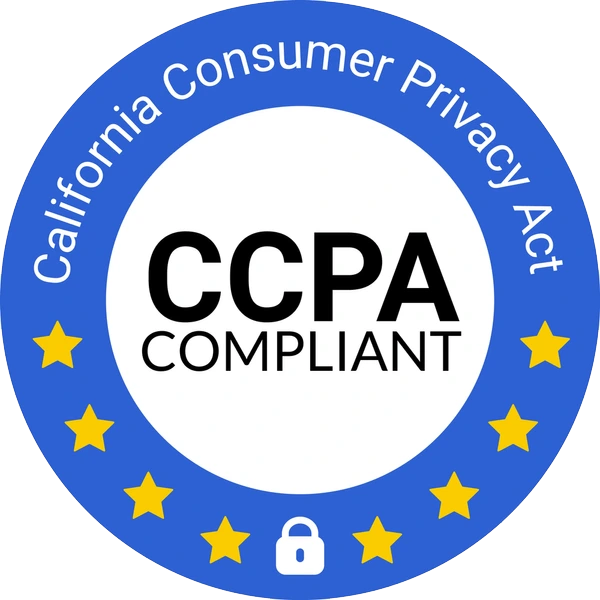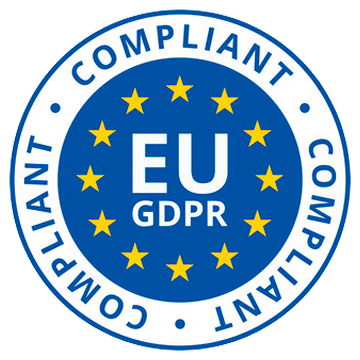If you regularly work with Microsoft documents, you’ll likely have lots of Excel and Word files stored on your laptop or in a cloud folder. Work-related documents and files containing sensitive, confidential information are best protected with a password. For this reason, it’s essential to learn how to password protect Excel worksheets from securing your data.
See who opens your spreadsheets
Share as a tracked Sizle link. Get instant open alerts & engagement insights.
Trusted by 30,000+ users. No credit card needed.
How To password protect Excel documents
While many people store personal financial budgets, projects, and related information on a spreadsheet, businesses of all sizes use Excel for large-scale worksheets, sometimes in a template or database format, to build and expand on a collection of detailed data.
Many organizations and industries use an Excel file or network of spreadsheets to track sales and inventory transactions, government agencies’ data, and a wide variety of businesses. Businesses use secure sharing through internal networks, though many files saved in Office 365, including Microsoft Excel and Word 365 documents, may not be adequately protected with a password.
If you want to improve business spreadsheet security and limit document access to specific individuals or groups of people, it’s crucial to add passwords to Excel files. Protecting sensitive information contained in Excel worksheets and related files with linked data requires a few quick steps to set encryption so that only authorized staff or individuals can view or edit the data.
Add a password to Excel files as a first step
Before you create a new file, whether it’s a standalone spreadsheet or linked to other reports and documents, you’ll want to set your Excel file password as a first step. This process should be done before you input information, create graphs or other related files. When you add a password to xls, you’ll avoid the risk of unauthorized access to your data.
If you have a document you’ve started, open the Excel file, or begin a new one, that you want to set up for password protection. Add a password to xls by selecting File, then choose Info from the menu. Choose the Protect Workbook option, which is one of the items you’ll notice on the drop-down menu, then Encrypt with Password.
You’ll then create a new password, which will encrypt your file at this stage. Your password should be complex enough that it’s not easy to guess. If you’re planning on sharing your document with a select group of people, share the password with them discreetly. You may want to record the password as a note and keep it hidden in a secure filing cabinet or password manager application.
You’ll also want to protect sensitive documents by storing them in a secure online environment so that only the designed individuals will have access to them. An xls password is essential for protecting your work so that document sharing can occur securely.
Secure your Excel file password
Once you enter a new password to encrypt an Excel file, it’s essential to keep it secured if it is forgotten. A lost password may result in losing your file completely, as it is difficult to recover your password-protected Excel file if this happens. It’s essential to learn how to password-protect Excel files and maintain them securely if someone else needs to review or revise them in the future.
To keep your Excel files well protected, make a point of changing the passwords every month or two. This update is significant for frequently accessed files that feed data into graphs, linked spreadsheets, and other documents that you’ll need to use often. You may not have to update passwords for rarely accessed files unless there is a concern someone may open them without authorization.
If you work for a small business or company where employees open Excel files regularly, you may want to change the encryption after an employee leaves or there is a change in staff. This will ensure your files are always secure and that previous staff will not access documents they are no longer privy to view.
Assigning a password to individual Excel files
When you add a password to Excel files on your computer, this will protect one document only and does not include any linked or related spreadsheets containing referenced formulas or data. While some people or small businesses use just a few worksheets to track data and update information, other companies or organizations may have a more complex system of spreadsheets and documents they work with regularly.
Assigning a password to each document may seem tedious, though it’s an essential step in maintaining secure data. Protect Excel files by storing them in a central file, which is also password-protected, so you can easily retrieve documents without difficulty. If you need to maintain an extensive list of passwords, it’s essential to store them in a password manager or similar system.When your password protects a document or series of documents, you may want to use a consistent theme or relatable words to protect a group of files to make it easier to remember. For example, suppose the files are for a small business office. In that case, you may want to “label” or encrypt them with words related to an internal code or product information that only employees or authorized staff would know.
When you open a password protected Excel file
Suppose a specific document or spreadsheet contains detailed information on a specific product or line of products, for example. In that case, you may want to use a password that discreetly relates to this item, such as “Product 12A”. When you open an encrypted file, you’ll be prompted to enter the password before gaining access to the document.
Suppose this document contains formulas, totals, and figures that “feed” other worksheets; you’ll need to add separate encryption to password-protect Excel documents and Word files. If you’re not too concerned about setting a unique password for each document, you can use the same word or make slight changes to each one, such as “password1”, “password2”, etc.
How to determine if a Microsoft Office file is password protected
If you’ve inherited a series of Excel files and other Microsoft Office documents, you’ll likely want to know if they have password protection. If they are not yet open on your screen, you’ll notice they are encrypted as soon as you attempt to access the file, which will prompt you to enter a password.
When an Excel file is open on your screen, you can find out if it’s encrypted by opening the Info tab menu and selecting the Protect Workbook tab. This section will display whether the file has a password set up. If you need access to this file later and are unaware of the password, you’ll want to store the security access information in a separate file or password manager.
How to password protect Excel files in an older version of Excel
If you’re working with an older version of Excel, there are a few additional steps to protecting your worksheet. The encryption process works through the “Save as” option, which offers the “More Options” tab or link. When you save the file with this method, you’ll have a “Tools” option available in the “Save” menu. This will lead to “General Options” and give you a new series of choices.
At this stage, you’ll have the ability to set a password with one of two options: to open and view the file or modify the document. You can enter the password you want to use in this box, then confirm your choice or make further changes beforehand. Once the password is confirmed, it will be set for future access and use.
While the process to password protect Excel files in an older version of Excel requires a few added steps, the security level for all versions of Excel is similar and will provide adequate protection for your file.
Sharing Excel spreadsheets on network drives
If you regularly access and upload updated Excel files to a shared network, you’ll need to share the encrypted details with co-workers and staff, so they can access the files you send and share on the drive. Some companies and organizations require passwords to be changed or updated for software programs and specific documents once over a month or several weeks to maintain greater control and limit the risk of unauthorized access.
How to password protect Excel Files in Google Drive
If your Excel worksheet is saved or created on a Google drive, there is a different password method to protect the file. If you work with a Word or Excel sheet on this drive, the only way to control who accesses or edits the document is by providing a link to the file. This happens through selecting the “Share” option in the top right corner of your screen.
When you choose to share your Google Drive document, whether it’s an Excel or Word file, you’ll have the option of copying a unique link to share with others. If someone already has authorized permission to the file, their name and email will appear in this box.
The bottom section of the box offers the option of enabling the link to become available or “unlocked” for anyone to view the file if they have the link. By choosing this option, anyone with a link to the Google Drive worksheet can open it, which makes this option a bit riskier if you only want a select few individuals to have access.
Access to viewing and editing Excel Google Sheets
If you’re concerned about someone modifiing data on an Excel sheet, you can set the access level to “view” so that the information remains protected. When you collaborate with one or more other people on a file, you may want to set the link for your file to “Edit,” so they are permitted to make changes.
Protecting specific sections of an Excel Sheet
If there’s a specific range of cells you want to protect in your file, you can select the “Data” option from the menu and choose “Protected sheets and ranges.” This option allows you to highlight a range of cells in a document and then change the settings so no one can modify this specific area. Once you select this range, choose “Set Permissions,” and specifically who will be allowed to modify or edit this section, then confirm.
If you purchase a premium drive for your Excel spreadsheets, such as Microsoft Office 365 or Microsoft OneDrive, you’ll have access to a similar procedure to protect your files.
Additional tips for protecting Excel files
While setting a password is recommended for ensuring your Excel worksheets are protected, with limited access, there are some further measures you can take to secure the data in your files:
- Set parameters around sections of your worksheet that cannot be changed or edited so that you can protect the consistency of data. This step is especially crucial if your file links to other spreadsheets that depend on formulas and updated information to provide accurate results.
- Change passwords often, and keep them updated in a password manager. Companies experiencing a change in staff access to files would benefit from a quick password update to ensure that only current employees can open and view these files.
- If available, set “view” and “edit” permission levels according to who can make changes and who can only view the document. For example, if you’re sharing a file for reference only, the “view” level is adequate, as the individual or team doesn’t need to change the data in the form.
Summary
Many businesses and organizations maintain many documents, and keeping them in one secure place is ideal for controlling access and ensuring the maximum privacy settings. The ideal solution for document and file management is setting up a network of shared documents through a community platform like Sizle. This process will enable you to share pertinent files, charts, and templates with designated teams and people while setting the mandatory password protection.
You sent the file. See what happens next.
Every unread document costs you time and opportunity.
Sizle shows what really happens after you hit send, instantly and securely.
Free 7-day trial. No card required.
Unlock insights instantly.



